One of the common business processes for any capital construction projects owners is the registration and qualification of contractors who could be invited to bid on their released bid packages and be awarded construction contracts and purchase orders if their proposals are selected. The prequalification process requires each contractor to submit details of their experience, labor and equipment resources, references, organization structure, registrations, memberships, financial status, and other details. This information will enable the project owner to analyze and assess each contractor qualification and submit their recommendations to either have the contractor prequalified and allowed to be invited to bid on released tenders or not.
In addition, many project owners might have the requirement for carrying out performance appraisals for those contractors when the project is completed. Some project owners might also decide on doing those performance appraisals on a quarterly or semi-annual basis. Some of those appraisals could be detailed appraisals or just a simple 5-points performance rating to be provided by stakeholders who are involved with the contractor. All of this information is of great value when it comes to creating what is known as the Contractor Profile.
Nevertheless, what most project owners fail to do is analyzing contractors’ actual performance as it relates to the key project management business processes required to deliver capital construction projects. For example, does the contractor have the trend to issue many Requests for Information (RFIs), does the contractor have the trend of submitting many claim notices, were there many Non-Compliance Reports issued to the contractor for Quality and/or HSE violations, is there a trend that Work Inspection Requests (WIR) issued by the contractor require resubmission to rectify work that was supposed to be correct, how many fatal accidents the contractor had, etc. This information might help to detect any correlations that can help to better understand the contractor’s profile.The analysis of those project management business processes might identify for example that there is a very strong correlation between the rejected Work Inspection Requests and the Non-Compliance Reports issued for poor quality workmanship as well as between Safety Accidents and Non-Compliance Reports issued for safety violations. The analysis also shows that there is a noticeable correlation between several claims issued that are associated with the submitted Requests for Information. On the other hand, the analysis shows that there is a negative correlation between delayed project completion date and project cost overrun. A correlation is a statistical measurement of the relationship between two variables. Possible correlations range from +1 to –1. A zero correlation indicates that there is no relationship between the variables. A correlation of –1 indicates a perfect negative correlation, meaning that as one variable goes up, the other goes down.
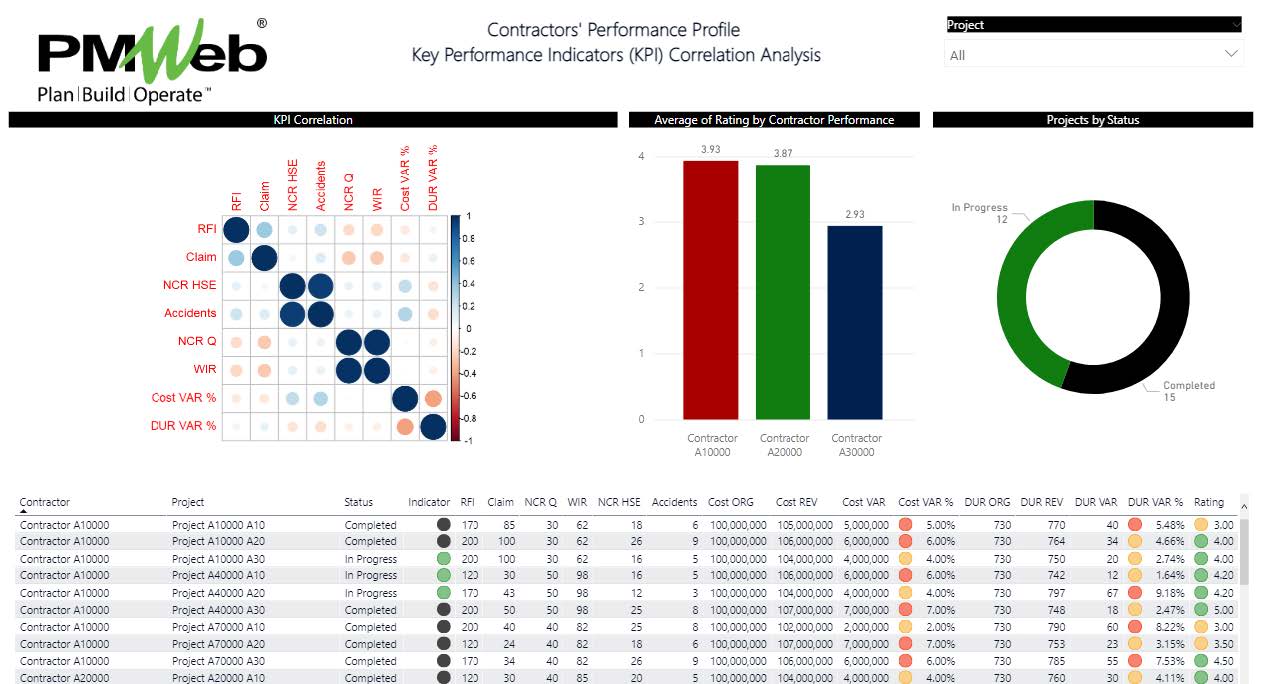
Project owners who have selected a Project Management Information System (PMIS) like PMWeb to digitize their business processes, the information from the above prequalification, appraisals, and other project management processes will become available to be used for the performance correlation analysis which one of the algorithms techniques used for machine learning. PMWeb comes ready with many of the templates for the business processes that are common to capital construction projects like those for Request for Information (RFI), Safety Incident, Technical Submittals, and others.
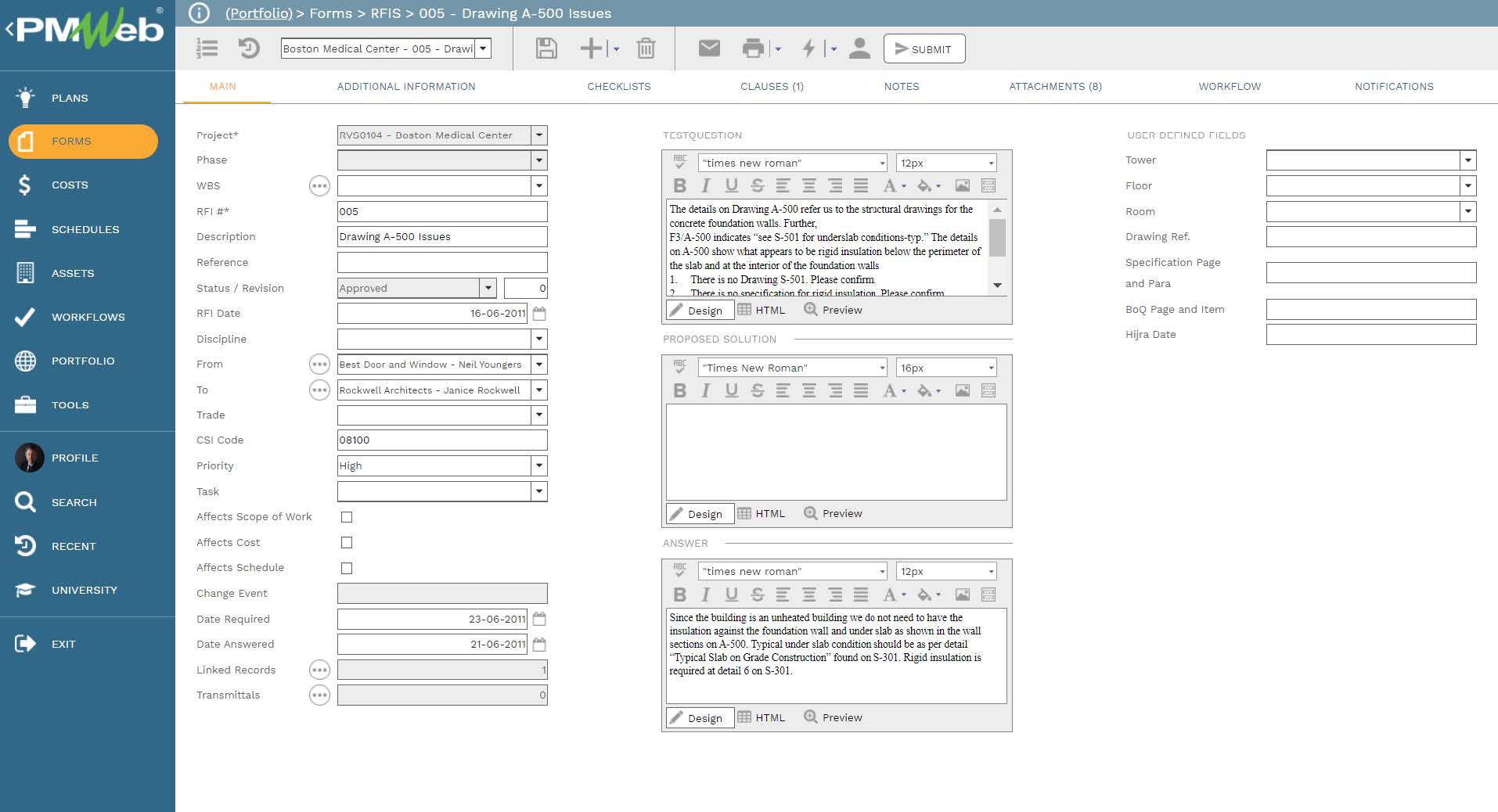
In addition, PMWeb custom form builder will be used to create the templates for the many other business processes that are either not readily available in PMWeb or there is a requirement for a customized templated even for those that are readily available in PMWeb. Each template will include all the needed data fields required for managing the business process as well as assessing the contractor’s performance.
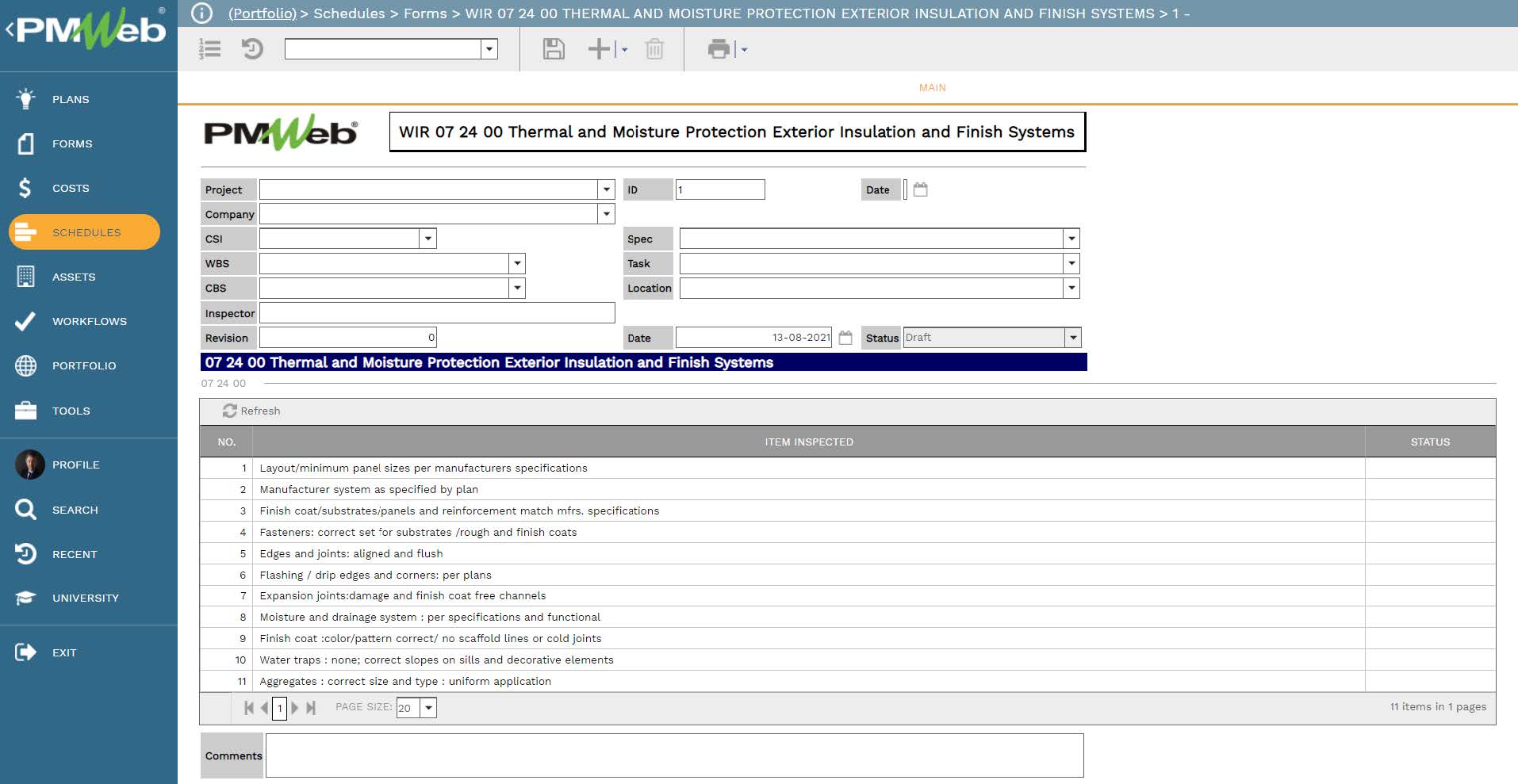
For each business process template, there could be the requirement to attach supporting documents to better explain the transaction. Those documents could include pictures, videos, MS Excel files among many others. The attachment tab for those templates will be used to attach all those supportive documents. It is also highly recommended to add comments to each attached document to provide a better understanding of what was the document for. The attachment tab also allows the user to link records of other business processes implemented in PMWeb as well as associate URL hyperlinks with websites or documents that are not stored in the PMWeb document management repository.

To enforce accountability for the review and approval process for each transaction for the business processes detailed above, the PMWeb workflow module will be used to create a workflow to formalize the review and approval tasks of those transactions of the business process. The workflow will map the sequence of the review and approval tasks along with the role or user assigned to the task, duration allotted for the tasks, and availability for each task. In addition, the workflow could be designed to include conditions to enforce the approval authority levels as defined in the Delegation of Authority (DoA) matrix.
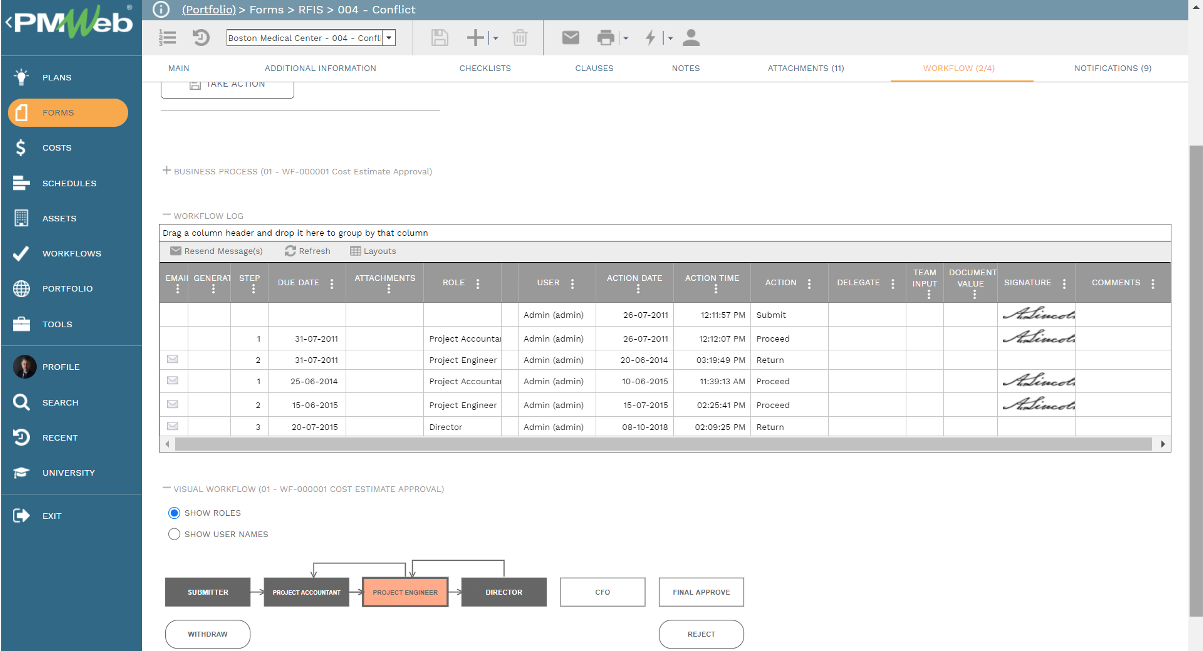
The data captured in those business processes will be used to analyze the key performance indicators reported for each contractor. For example, “Contractor A10000” who have received a favorable average performance rating of “3.93” out of “5.00”, the analysis shows a very strong correlation (Dark Blue) between rejected WIRs and NCRs issued for poor quality workmanship as well as between Safety Accidents and NCRs issued for safety violations. The analysis also shows a strong correlation (Light Blue) between claims issued and submitted RFIs. On the other hand, the analysis shows a very strong negative correlation (Dark Orange) between delayed completion date and cost overrun.
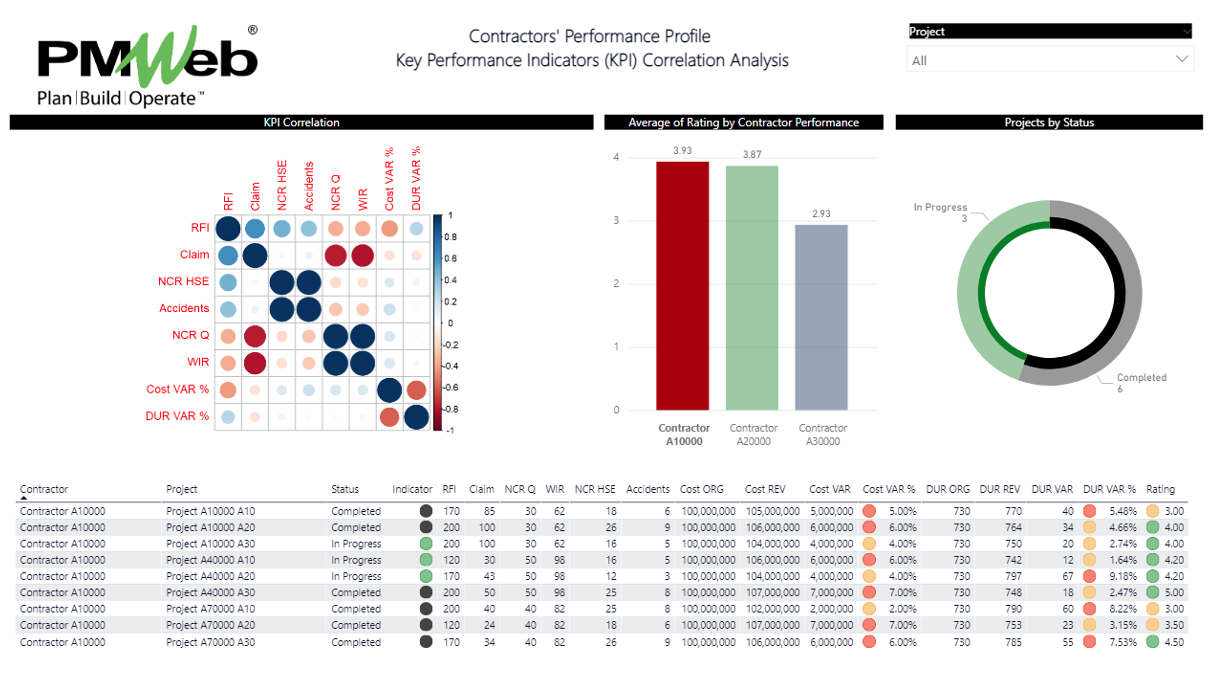
On the other hand, for “Contractor A30000” who have received an unfavorable average performance rating of “2.93” out of “5.00”, the correlation analysis shows a very strong correlation (Dark Blue) between rejected WIRs and NCR issued for poor quality workmanship, between Safety Accidents and NCRs issued for safety violations as well as between claims issued and submitted RFIs. On the other hand, the analysis shows that there is a low negative correlation (Light Orange) between delayed project completion date and project’s cost overrun.




